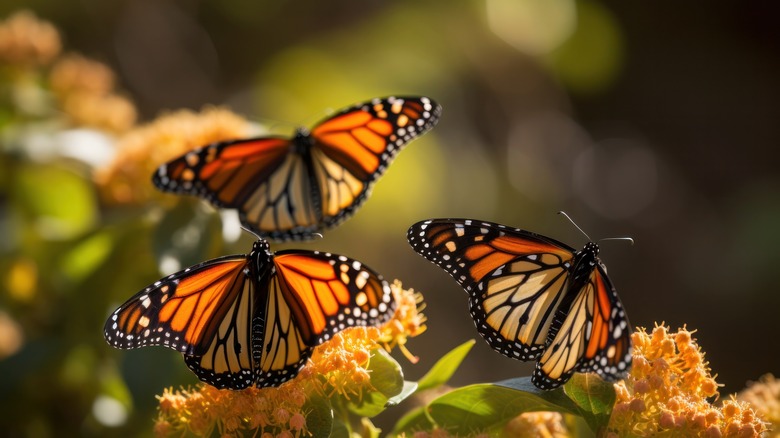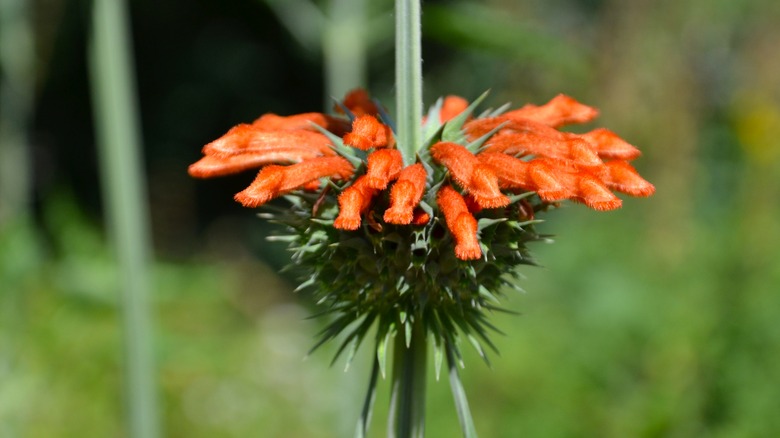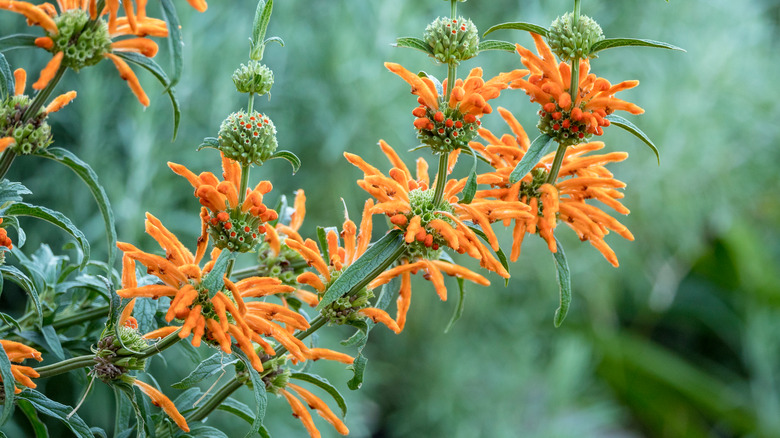No Butterfly Garden Is Complete Without This Sweet-Smelling Flower
Few things can bring as much life and color to your yard as a butterfly garden. Not only are they full of beautiful flowers to enjoy, but they also encourage butterflies, hummingbirds, and other pollinators to visit. One of the best plants to add to warm-climate butterfly gardens is the distinctive lion's ear plant.
Lion's ear (Leonotis leonurus), also sometimes called wild dagga or lion's tail, is native to southern Africa and is a perennial in USDA zones 8 through 11. Able to grow up to 8 feet tall and spread up to 6 feet wide, lion's ear is a perfect option for the border of a pollinator garden as its tubular orange flowers are a hit with both butterflies and hummingbirds. In warm areas, lion's ear can bloom through winter, while in cooler parts of its range, it dies back during colder months and then regrows from the roots.
Growing lion's ear
Lion's ear, a member of the mint family, grows best in neutral to alkaline soil with good drainage. While lion's ear thrives in full sun, it is also able to grow well in partial shade, making it a versatile option that fits well in many types of gardens. Once established, lion's ear is quite drought tolerant, making it a perfect choice for gardeners who want to both attract butterflies and conserve water. While the flowers themselves do not smell, the plant's foliage has a mild and pleasant aroma.
Don't confuse Leonotis leonurus with its annual relative Leonotis nepetifolia, which is also sometimes called lion's ear. While the two plants look very similar and have a similar range, Leonotis leonurus is far less aggressive in its spread and is better suited for gardens. Leonotis nepetifolia, on the other hand, is considered to have a high invasiveness risk in Florida, Hawaii, and other warm regions.
Using lion's ear in butterfly gardens
Because lion's ear can grow quite tall, it works best towards the back of a garden, with other smaller plants in front of it. Beebalm (Monarda fistulosa) is a good option that grows well in similar conditions to lion's ear. Butterfly milkweed (Asclepias tuberosa) is also a good companion for lion's ear as it can also tolerate dry soil. Its orange flowers are also a close color match for the flowers of the lion's ear. Because of milkweed's importance to native species, many gardening and nature organizations in local communities even offer free milkweed seeds.
While growers in colder zones may have to pass on growing lion's ear, butterfly milkweed can be grown in zones as cold as 3, and beebalm can grow in zones 4 through 9. The butterfly bush (Buddleia davidii) remains a popular option for butterfly gardens, but it is a controversial choice as they are considered invasive in many regions. Although sterile or mostly sterile varieties of butterfly bush are available, the Master Gardeners of Northern Virginia strongly recommend opting for alternatives like New Jersy tea (Ceanothus americanus) instead.


